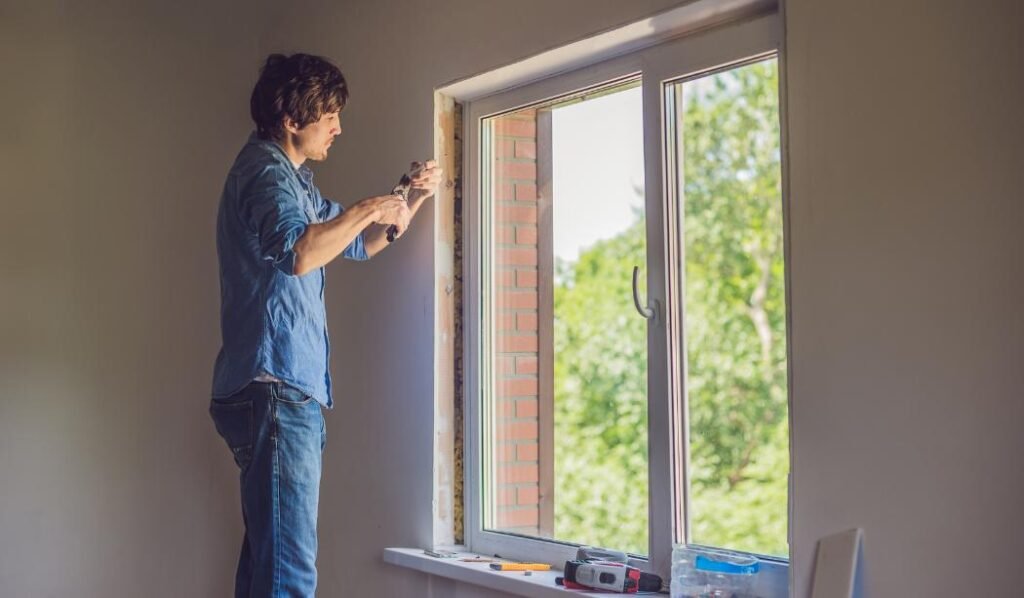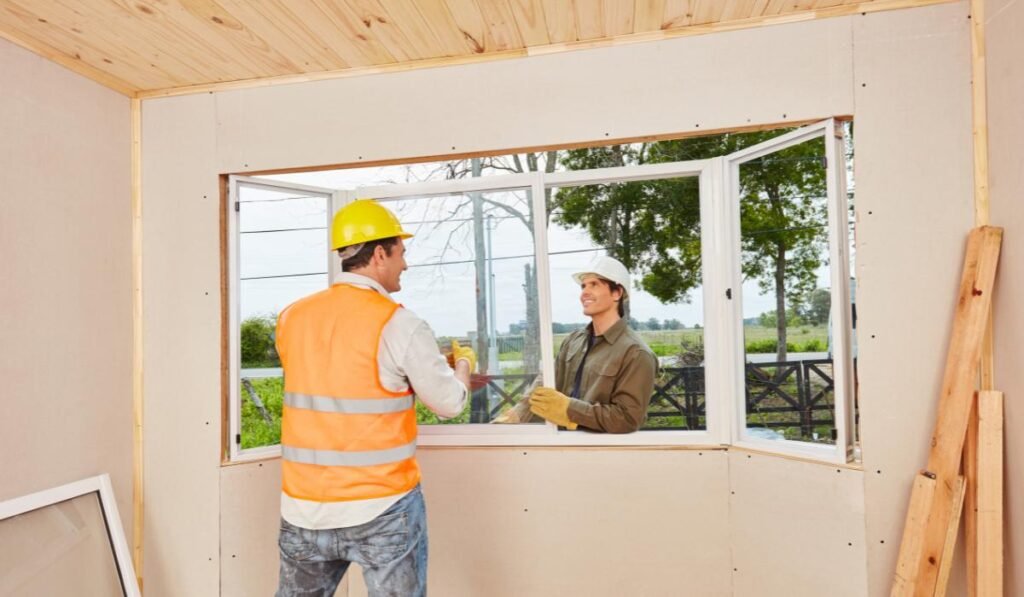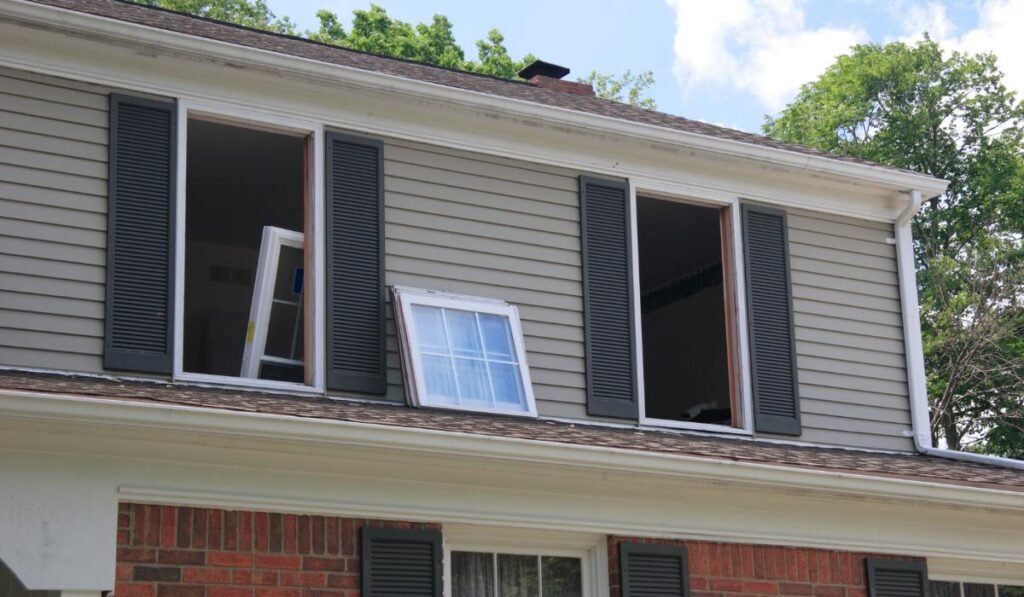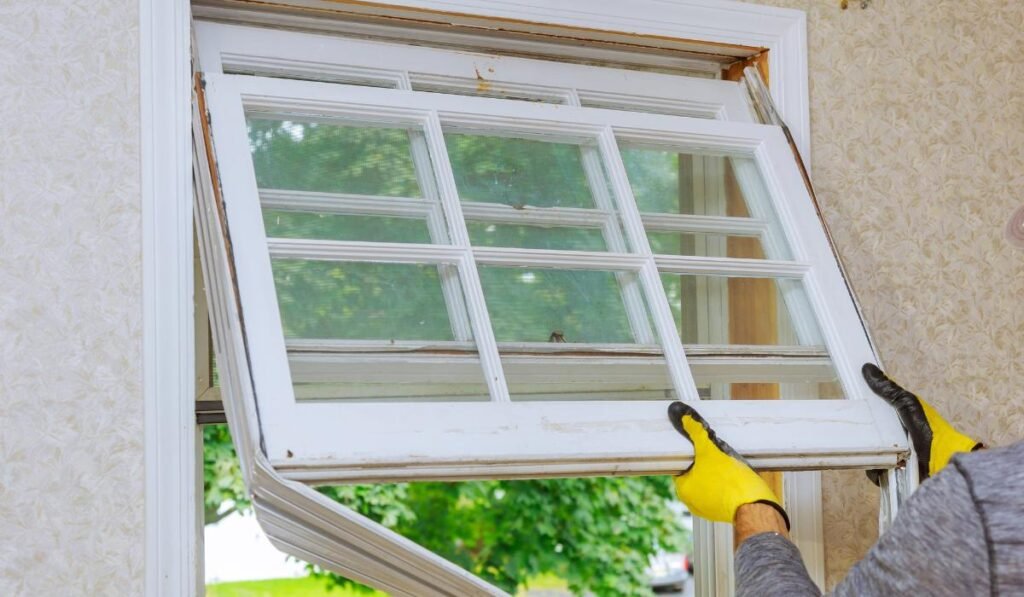Full Frame vs Insert window Replacement

Let’s be honest: the journey of replacement windows is not always the easiest. First, you must decide what company to trust and what material or brand works best for your home. Then, you discover there are different methods to install on top of that. The decision on who the best local window company is is already hard. Still, installation methods are often an area most people do not know of. In this article, we will discuss the differences between the two most common methods, from installation to cost, energy efficiency, aesthetics, durability, and timeframe.
We will also discuss why these differences matter to homeowners, exploring the impact on appearance, energy efficiency, and cost.
We will weigh the pros and cons of full-frame and insert window replacement to help you make an informed decision.
Stay tuned to learn which method may be suitable for you based on factors such as the age of your home, the condition of your current windows, your budget, and your personal preferences.
Let’s dive in and find out which option best suits your needs!
What Is Full-Frame Window Replacement?
Full-Frame Window Replacement involves removing the entire window unit, including the sash and mainframe, down to the rough opening and installing a completely new window unit.
This process typically starts by carefully measuring the existing window to ensure a proper fit for the replacement unit. Next, the old window is removed, often requiring the sash, trim, and hardware to be removed. Once the old unit is out, the new full-frame window is placed into the opening and adequately leveled and secured. Professional installation ensures the new window is correctly sealed, insulated, and operates smoothly.
What Is Insert Window Replacement?
Insert Window Replacement entails fitting a new window unit into the existing window frame without removing the trim or disturbing the external siding.
By opting for this method, homeowners can enjoy the benefits of a refreshed appearance and improved energy efficiency without the hassle of extensive renovations. The process involves carefully measuring the existing frame to ensure a precise fit for the new window unit. Moreover, Insert Window Replacement is eco-friendly, as it minimizes waste by preserving the original structure. It also allows for a quicker installation timeline than full window replacement, saving homeowners time and money.
What Are the Differences Between Full-Frame and Insert Window Replacement?
The primary difference between Full-Frame and Insert Window Replacement lies in the installation process. Full-frame involves complete removal and replacement, while insert windows fit into the existing frame without significant alterations.
When opting for a full-frame replacement, the entire window unit, including the frame and sash, is removed, allowing a new window to be installed. This method is beneficial when the existing frame is damaged or deteriorated.
On the other hand, insert window replacement involves fitting a new window within the existing frame, providing a quicker and less invasive process that preserves the exterior and interior trim.
Installation Process
The installation process for full-frame window replacement requires removing the existing window down to the rough opening. This has a more significant effect on the exterior and interior of your home.
For full-frame window replacement, the company will start by carefully measuring the rough opening to ensure the new window will fit properly. Proper measurements are essential to avoid issues during installation.
Most professional window companies will have a separate person, usually an installer or team lead, come and measure again to verify the exact dimensions. After that is complete, your windows will be ordered. Once they arrive and your installation date is set, the process starts.

Cost
The cost difference between full-frame and insert window replacement can vary significantly. Full-frame is generally more expensive due to the additional materials and labor required for complete window unit replacement. In general, I have seen the cost difference to be roughly 20%-40% more for full-frame windows and installation vs. insert.
Homeowners opting for full-frame replacement should consider the higher material expenses, and often more labor is required. In contrast, insert window replacement, which involves fitting new windows into the existing frame, tends to be more cost-effective due to reduced labor and material requirements.
Factors such as the project size, window type, and the scope of additional repairs needed can all impact the overall cost. Full-frame replacement might be necessary for older homes with damaged frames. In comparison, insert replacement could be suitable for newer homes looking to upgrade without significant structural changes.
Energy Efficiency
Energy efficiency is crucial, and full-frame window replacement offers better insulation and energy savings than insert window replacement due to the complete seal and new frame installation.
Choosing the correct type of window replacement can make a significant difference in improving a home’s energy performance. Full-frame replacements involve removing the entire window, including the frame, and installing a new unit, providing a more airtight seal than insert replacements. This tight seal helps prevent drafts and heat loss, lowering energy bills and reducing energy consumption. In contrast, insert replacements retain the existing frame, making them less effective at insulating against outdoor elements, leading to energy wastage. By upgrading to full-frame windows, homeowners can not only enhance the energy efficiency of their homes but also improve overall comfort levels by reducing temperature fluctuations and noise penetration.
Aesthetics
Aesthetically, full-frame window replacement provides a seamless look as it involves replacing the entire window unit, offering a fresh appearance and the opportunity to update trim styles, whereas insert window replacement maintains the existing frame and trim.
With full-frame replacement, homeowners can completely transform their property’s visual aesthetic, giving it a modern and cohesive feel. In contrast, insert replacements are more cost-effective and quicker to install. They maintain the current trim details and window frame to preserve the house’s original character.
Choosing the proper trim can significantly impact the overall look of the windows. For full-frame replacement, homeowners can opt for more comprehensive trim profiles to add a bold statement or choose sleek, minimalistic styles for a contemporary touch. On the other hand, insert replacements allow for seamless integration of the existing trim, maintaining the home’s traditional charm.
Durability
Durability is a key factor to consider. Full-frame window replacement offers long-term stability and structural integrity, which is especially beneficial for wood windows prone to rot or decay. With the insert, window replacements may be less durable due to their reliance on the existing frame.
Full-frame installations completely replace the entire window structure, ensuring enhanced durability by addressing any underlying issues and offering a fresh start. The robust nature of full-frame replacement minimizes the risk of future problems such as air leakage, water intrusion, or structural weaknesses common with insert replacements.
This comprehensive approach strengthens the frame and improves insulation in most cases.
Timeframe
The timeframe for full-frame window replacement is typically longer than insert window replacement due to the comprehensive removal and installation process, which may inconvenience homeowners for a longer duration.
The entire window structure is removed when opting for full-frame replacement, requiring more labor and time than insert replacement.
This thorough process ensures a complete update of the window system; it also means that the project timeline and installation time may extend beyond what homeowners initially anticipate.
On the other hand, insert window replacement involves fitting the new window into the existing frame without disturbing the surrounding trim, leading to a quicker installation process.

Why should These Differences Matter to you?
Full-frame window replacement involves completely removing the existing window system. This method is required if your current windows have rot or damage or if your older window frames are not in good enough condition to support a new window. Also, if you want to change the style of your windows completely, I often suggest a full-frame window for a fresh start, a new style, and an overall look.
Insert window replacement, on the other hand, is a quicker and more cost-effective solution as it fits into the existing frame without disturbing the surrounding trim, siding, or interior walls. While it may offer less flexibility in design options, insert replacement can be a practical choice for homeowners looking to upgrade their windows without a complete renovation or who want just to address the issues with current windows.
These differences are essential for homeowners to consider as they impact not only the visual appeal of their home but also their energy efficiency and financial implications. Full-frame replacements can provide better insulation and reduce air leakage, potentially saving energy. On the other hand, insert replacement might be a more budget-friendly option upfront but could result in higher energy costs in the long run due to less effective sealing.
What Are the Pros and Cons of Full-Frame Window Replacement?
Pros
The pros of full-frame window replacement include:
- Better customization options.
- Increased durability.
- A proper correction of any rot or underlying issue on current windows
- Improved energy efficiency.
- A fresh aesthetic appearance can enhance a home’s overall value and comfort.
The long-term reliability of full-frame window replacements ensures that homeowners can enjoy peace of mind knowing that their investment is durable and built to last.
Cons
The pros of Full-Frame window installation
- Longer project timeline and installation process
- The potential disruptions to the home’s interior and exterior can lead to dust, debris, and other issues
- It is more complex to decide on new trims interior and exterior in most cases
- Matching new products to an existing home can be a challenge sometimes.
By preparing adequately and understanding the process, homeowners can minimize the impact of these drawbacks and ensure a smoother transition to new windows.
What Are the Pros and Cons of Insert Window Replacement?
Pros
- Less overall cost
- Quicker installation process and minimal disruption to the existing structure.
- The least amount of change to the current look and style of your home
- Often, there is a shorter overall ordering timeline, fewer decisions on exterior and interior trim, and fewer add-on option costs.
- Increase energy efficiency over old windows.
- In most cases, they are still resolving smaller issues with older windows.
The main appeal of Insert Window Replacement lies in its ability to save homeowners money while preserving the original structure. This type of replacement is often more budget-friendly than full-frame options, making it an attractive choice for those looking to update their windows without breaking the bank.
Cons
- challenges in achieving a seamless aesthetic integration with the existing structure
- Insert replacement windows sometimes result in compromised thermal efficiency vs Full Frame.
- Reduced natural light penetration: By placing an insert on an old frame, you can often lose the amount of actual glass for viewing.
- If you just cover up underlying issues in the frame, those issues will arise again.
The visual and functional compromises associated with insert windows can manifest in various ways, such as difficulty opening or closing the windows smoothly, reduced natural light penetration, or even limited ventilation options. These drawbacks can detract from the overall satisfaction and usability of the windows in the long run.
Which Method Is Right for You?
Determining the proper window replacement method for one’s home hinges on various factors, including budgetary constraints, design preferences, energy efficiency objectives, and the state of the present window frames.
One crucial consideration when selecting a window replacement method is the cost. If budget is a primary concern, opting for standard replacement windows may be the most practical choice. Suppose aesthetics play a significant role in your decision-making process. In that case, you might consider investing in customized windows that align with your design aspirations.
For those mainly looking to enhance the energy efficiency of their home, upgrading to either option can lead to long-term savings on heating and cooling bills. It’s essential to evaluate the performance expectations of different window types to ensure they meet your insulation and weatherproofing needs.
Age and Condition of Current Windows
The age and condition of existing windows play a vital role in determining whether full-frame or insert window replacement is more suitable. Older or damaged windows may benefit from full-frame installations to address underlying structural issues.
Deteriorating windows or lack of proper insulation can lead to energy inefficiency and draftiness, influencing the decision to opt for a full-frame replacement.
Having a professional company or installation specialists Evaluate the structural integrity of the current frames is crucial as it can impact the overall performance and longevity of the new windows.Poor seals or warped frames can contribute to moisture intrusion, mold growth, and heat loss.
Conclusion
The choice between full-frame and insert window replacement methods should be based on carefully evaluating all the factors, such as installation costs, energy efficiency benefits, and personal preferences. This ensures you make an informed decision that enhances your home’s comfort, aesthetics, and value. The largest factor in this decision is often the condition of your current windows in my experience. With the company I worked for, we would not do an insert window installation on a home with rot or underlying issues, knowing that we were only band-aiding the actual problem, and by doing so, we were performing a disservice to the customer and the company, we were installing for. Make sure the window company you select has your best interest in mind.

Frequently Asked Questions
What is the difference between full frame and insert window replacement?
The main difference between full frame and insert window replacement is the extent of the window replacement process. Full frame replacement involves removing the entire window, including the frame and sash. At the same time, insert replacement only replaces the window’s movable parts.
Which method is more cost-effective?
Insert window replacement is typically more cost-effective because it doesn’t require removing the entire window frame, which can be time-consuming and labor-intensive. This method also allows for a quicker installation, lowering labor costs.
What are the benefits of full frame window replacement?
Full frame window replacement allows for a completely new and improved window, including the frame. This can provide better insulation, improved energy efficiency, and a more aesthetically pleasing result. It also allows for the replacement of damaged or rotted window frames.
What are the advantages of insert window replacement?
Insert window replacement is an excellent option for homeowners who want to update their windows without the mess and cost of a full frame replacement. It is also a good choice for historic homes or homes with unique architectural features that would be difficult to replicate with a full frame replacement.
Which method is better for energy efficiency?
Full-frame and insert window replacements can improve energy efficiency, but full-frame replacement may offer better results. Since the entire window is replaced, it allows for installing new insulation and a tighter fit, reducing air leakage and improving energy efficiency.
Can I switch between full frame and insert window replacement methods?
In most cases, it is possible to switch between full frame and insert window replacement methods. However, this may require additional work and costs. It is best to consult a professional to determine the best method for your specific needs and avoid potential complications.





